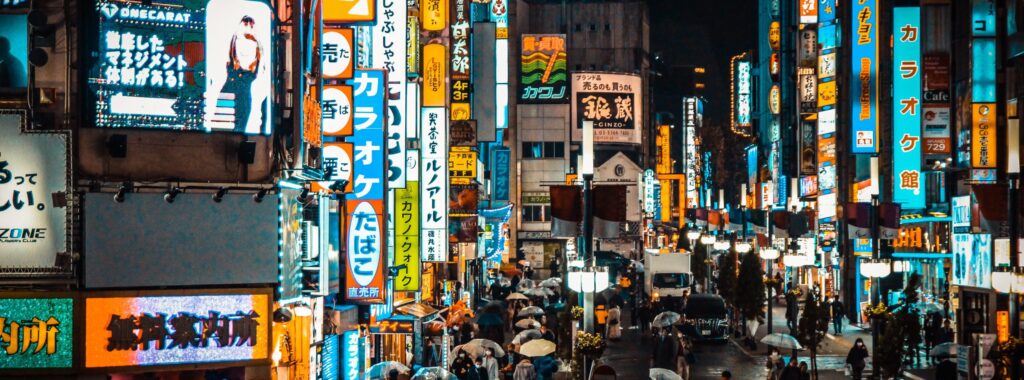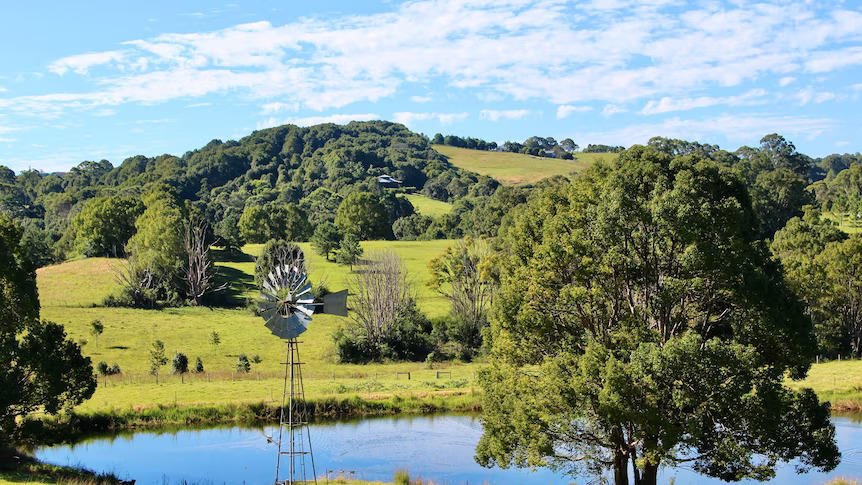Original publication by Juliette Portala for mongabay.com on 27 January 2023

Image by Pema Lama via Unsplash.
- A new study finds that artificial lights in coastal megacities have come to outshine the moon for most of the year, putting marine species at risk.
- The researchers say that light pollution impacts on marine ecosystems are difficult to assess compared to other pollutants, as levels of light underwater are not only hard to detect with current instruments, but the spectrum and magnitude can change with tides and water clarity.
- Experts note that artificial light pollution needs to be addressed through mitigation plans aimed at cutting the use, duration and intensity of urban lighting, especially considering the popularity of LEDs, whose blue light penetrates the sea deeper than orange lights.
Night is falling on Tokyo. The moon, shining in a berry-blue sky, has come to govern the darkness. But it has not come alone: a new study reveals that artificial light in coastal megacities is outshining the moon and exposing marine ecosystems to threats still poorly understood.
A new model looking at how natural and artificial light radiates underwater finds that the amount of artificial light at night, or ALAN, could be up to six times greater than moonlight in coastal cities with more than 10 million people — think Tokyo, Los Angeles or Lagos — due to growing urbanization.
“The results of our modelling study show that ALAN dosage exceeds that of the natural night-time lunar source above and below the surface of the sea, across all seasons, and in all of the metropolitan areas examined,” the team of scientists wrote in their paper published in Elementa: Science of the Anthropocene, which compared the intensities and dosages of artificial lighting in seven megacities over 2020.
The study demonstrated that lunar irradiance only outshines its anthropogenic competitor about three days before and after the full moon, particularly in mid-latitude winter. That’s because the full moon is much higher in the sky and the nights longer in winter, meaning the moon shines for a longer time, according to study lead author Tim Smyth.
But for the rest of the year, artificial light overwhelms the waxing and waning cycles of the moon. The research points out that ALAN intensities barely change throughout the night or all year round, even masking changes in the amount of sky covered by clouds.
“The lights coming on at night are very much a stepwise function, so they’re on or off,” said Smyth, the head of science for marine biogeochemistry and observations at Plymouth Marine Laboratory in the U.K.

Image by Admitter via Flickr (CC BY-ND 2.0).
According to a 2017 study in Science Advances, Earth’s continuously lit areas brightened at a rate of more than 2% annually from 2012 to 2016.
For billions of years, biological organisms have evolved to the rhythms of natural light alone: sun, moon and stars. “It’s only in the last 50 years that we’ve suddenly introduced this new pollutant,” Smyth said, referring to artificial lighting.
‘Not something natural’
Marine animals rely heavily on the natural light cycles of the moon and stars to regulate critical physiological and behavioral processes, such as spawning (for corals) or daily migration (for zooplanktons).
Sea surface light around each megacity is relatively stable, Smyth’s team found in their research. But underwater, ALAN’s spectrum and magnitude are highly modulated by the ebb and flow of the tide and water clarity.
Quantifying the intensity and dosages of artificial light is essential to understanding its repercussions on marine animals, according to the research. However, such data are limited compared to other known stressors such as wastewater discharge and air and noise pollution. And the deeper you go, the harder it is to gather data.
“We know from our experience in the terrestrial environment … that artificial light does impact tremendously on ecosystems,” Smyth said. “What is less known is what the impact is in the marine environment … because as you go further offshore, you then become more and more remote from the urban light sources.”
Still, marine wildlife may not be safe even beyond the coastline, he said. Offshore developments for wind, oil and gas installations are also sources of light, and thus pollution, that marine animals can run into.
Petrels, one of the most threatened bird groups, spend most of their life at sea and only return to land to breed. As a result, they must adapt to survive in the terrestrial, aerial and marine environments, including to changes in light intensity and spectra.

Image by Paul Carroll via Unsplash.
“The attraction of seabirds to artificial lights leads to fallout and mortality events involving, in some cases, thousands of birds in a single breeding season,” Airam Rodríguez, a wildlife biologist based at Madrid’s National Museum of Natural History, wrote in a chapter in the book Conservation of Birds this year. Urban light can disorient fledgling petrels at night, forcing them to land and potentially collide with human structures.
“To mitigate light pollution-induced mortality, the most common action is the rescue programs, but these programs rescue already grounded birds and do not address the cause of the problem,” Rodríguez wrote.
Light pollution is also known to impact zooplankton, one of the pillars of the marine ecosystem. Zooplankton migrate every night from the bottom of the sea to the surface. But when there’s light pollution, they migrate much less, according to Oren Levy, head of the molecular marine ecology lab at Bar-Ilan University in Israel.
“Where you are impacting things like the migration of zooplanktons up and down in the water column, that is where you are likely to have an impact on their life cycles, [which] will have an impact on fisheries,” Smyth said, citing a “chain dependency.”
Light pollution also affects the gametogenesis cycle of corals, the phase before spawning, Levy said. He ran experiments on corals in aquariums in the Philippines by illuminating them with the same light levels observed in the Gulf of Aqaba in the Middle East. Located at the northern tip of the Red Sea, it is one of the most light-polluted areas of the world.
After a few months, the coral eggs and sperm had not developed under such conditions. On a physiological level, Levy also noted an increase in stress among corals exposed to light pollution.
For the fish living in symbiosis with corals, inside their branches, the impact is different. In the daytime, they swim outside the colony, getting food from the seafloor as well as from the currents. Once night falls, they return to the safety of the corals. But when artificial lights interfere, the fish become sleepless, leading to DNA damage in their brains, Levy said; just like humans, fish need a period of inactivity.
However, some fish also take advantage of the unnatural light. Species that hunt at night find it easier to catch their prey when the water is lit up.
“The ecosystem is changing. Some benefit and some lose, of course,” Levy said. “But this is not something natural.”
Still, there’s much we don’t know, as it’s hard to collect data in the deep sea. Some sea animals are incredibly sensitive to extremely low levels of light — zooplanktons, for instance, can detect light of 0.1 microwatt — but it’s very difficult to measure light at this level, Smyth said.

Image by Derek Keats via Flickr (CC BY 2.0).
“There are papers that measure the penetration of ALAN until 10 or 20 meters [33-66 feet]. But it doesn’t mean that light pollution doesn’t penetrate more,” Levy said. Scientists are in the dark in deeper waters, given the lack of accurate and affordable light-measuring sensors.
“At the moment, we can kind of say ‘well there’s a smoking gun … we’ve dramatically changed the lightscape of these particular ecosystems, it’s highly likely that there will be an impact,’” Smyth said.
‘We can be smarter’
Against the backdrop of a global energy squeeze following Russia’s invasion of Ukraine, Smyth stressed the need to promote a “sensible use” of energy.
“I think what the energy crisis has given us is an opportunity to say, ‘Do we really need to do what we’re doing?’” he said. “We certainly can be [smarter] in the way that we light offices and homes, and I think we can be smarter in the way that we light our streets as well.”
For Rodríguez, the lighting industry encourages people to believe that brightness equates to security. However, the negative impacts [from too much light at the wrong time] on biodiversity, human health and the economy “are evident and demonstrated,” he said. “There are associations fighting to preserve the natural night sky.”
Levy said research has demonstrated that it’s possible to reduce artificial light while letting people feel safe enough, thus finding a happy medium.
The European Union, which cited a tenfold increase in illumination levels in industrialized countries over the past 50 years, is seeking to address artificial light pollution as part of its biodiversity strategy for 2030. The executive arm of the 27-member bloc launched a call for projects in December within the framework of its Horizon program.
In February 2020, the United Nations also adopted light pollution guidelines through the Convention on the Conservation of Migratory Species of Wild Animals, acknowledging that this is an emerging issue for both wildlife conservation and human health.
Given this, artificial nighttime light is starting to be recognized as a harmful pollutant, Rodríguez said, pointing to a growing number of scientific publications and dissemination campaigns.

Image by Denys Nevozhai via Unsplash.
“We need to involve what we call today ‘citizen science,’” Levy said, adding it’s important to raise awareness through the media and through apps that measure artificial light pollution. “When you know that your action can really impact directly, people will do it.”
Mitigating light pollution must tackle not only use, duration and intensity of urban lighting, but changes in spectral composition as well, Rodríguez said. Research has shown that red light appears to penetrate the sea less than other spectrums, according to Levy, who called it “shallow.”
“Although I think that LED lighting is a fantastic innovation … it’s certainly well known that the blue light has detrimental effect on our health for prolonged periods of time,” Smyth said.
Studies have found that the blue end of the spectrum of light from LEDs, which have become increasingly popular as they are more efficient, can damage the retina and cause sleep disturbances.
“The blue light can actually penetrate right down to the seafloor,” Smyth said. “Certainly, when I was growing up in the ’70s and ’80s, the cities were much more of an orange glow … I think if we go towards that kind of coloring of that spectrum again, that would be a positive step.”
While this solution would help, according to Levy, there is a risk that governments could get ahead of themselves and start adding too many orange lights on the rationale that they’re better than white.
“Light is not good, orange or white,” he said.
Citations:
Smyth, T. J., Wright, A. E., Edwards-Jones, A., McKee, D., Queirós, A., Rendon, O., … Davies, T. W. (2022). Disruption of marine habitats by artificial light at night from global coastal megacities. Elementa: Science of the Anthropocene, 10(1). doi:10.1525/elementa.2022.00042
Kyba, C. C., Kuester, T., Sánchez de Miguel, A., Baugh, K., Jechow, A., Hölker, F., … Guanter, L. (2017). Artificially lit surface of Earth at night increasing in radiance and extent. Science Advances, 3(11). doi:10.1126/sciadv.1701528
Rodríguez, A. (2023). Mitigating light attraction. Conservation of Marine Birds, 369-378. doi:10.1016/b978-0-323-88539-3.00014-5
Marangoni, L. F., Davies, T., Smyth, T., Rodríguez, A., Hamann, M., Duarte, C., … Levy, O. (2022). Impacts of artificial light at night in marine ecosystems—A review. Global Change Biology, 28(18), 5346-5367. doi:10.1111/gcb.16264
Ayalon, I., Rosenberg, Y., Benichou, J. I., Campos, C. L., Sayco, S. L., Nada, M. A., … Levy, O. (2021). Coral gametogenesis collapse under artificial light pollution. Current Biology, 31(2), 413-419.e3. doi:10.1016/j.cub.2020.10.039




